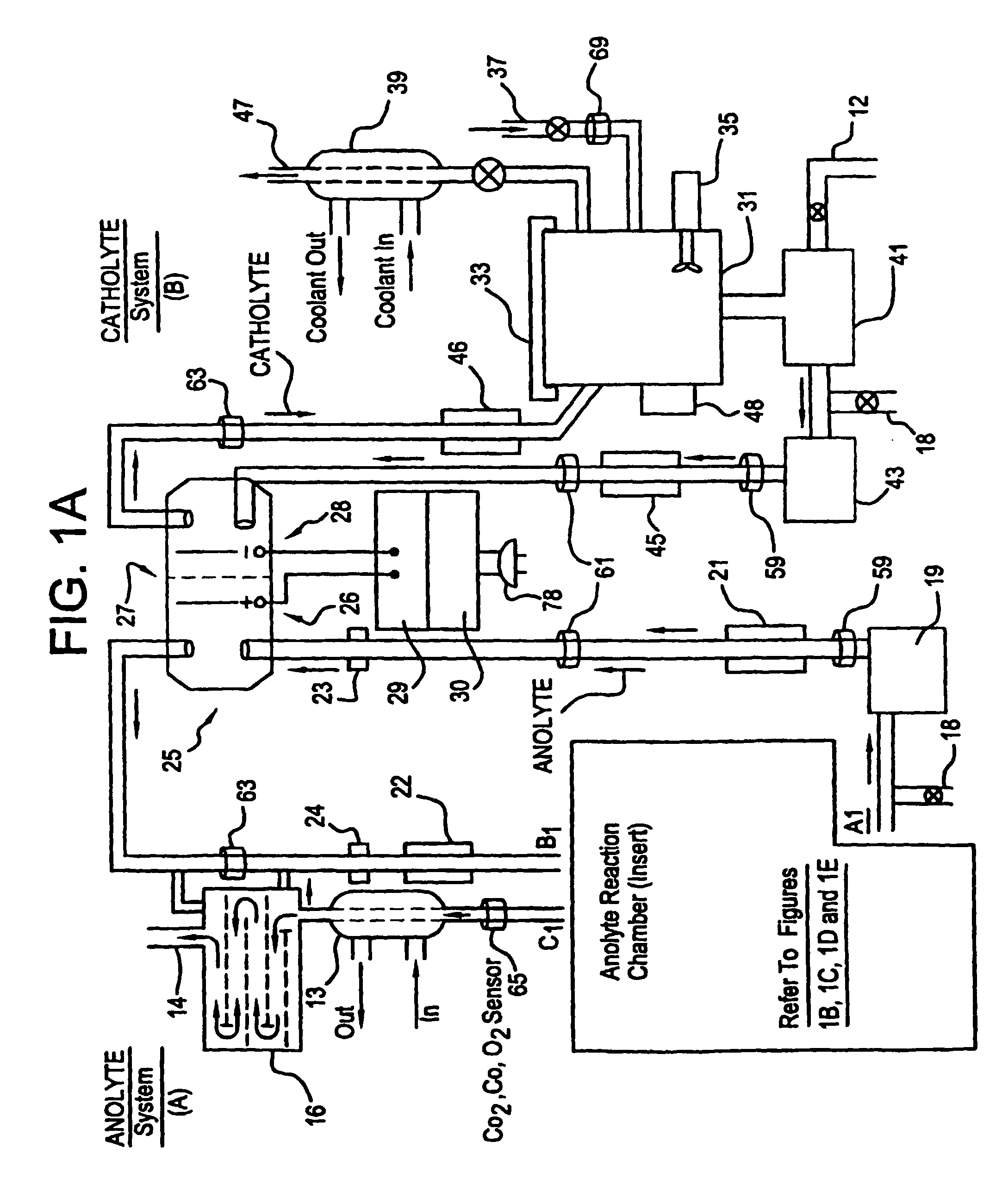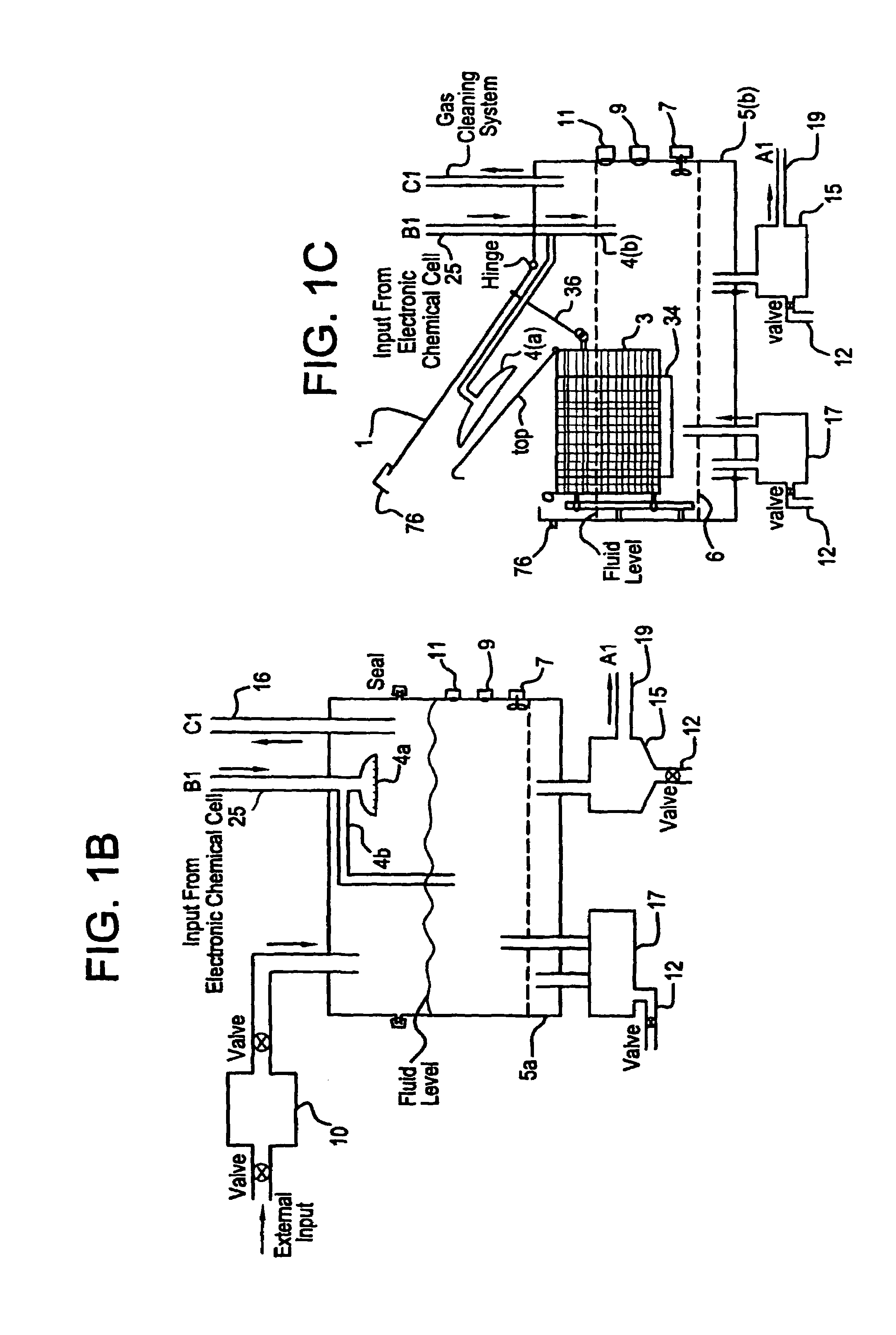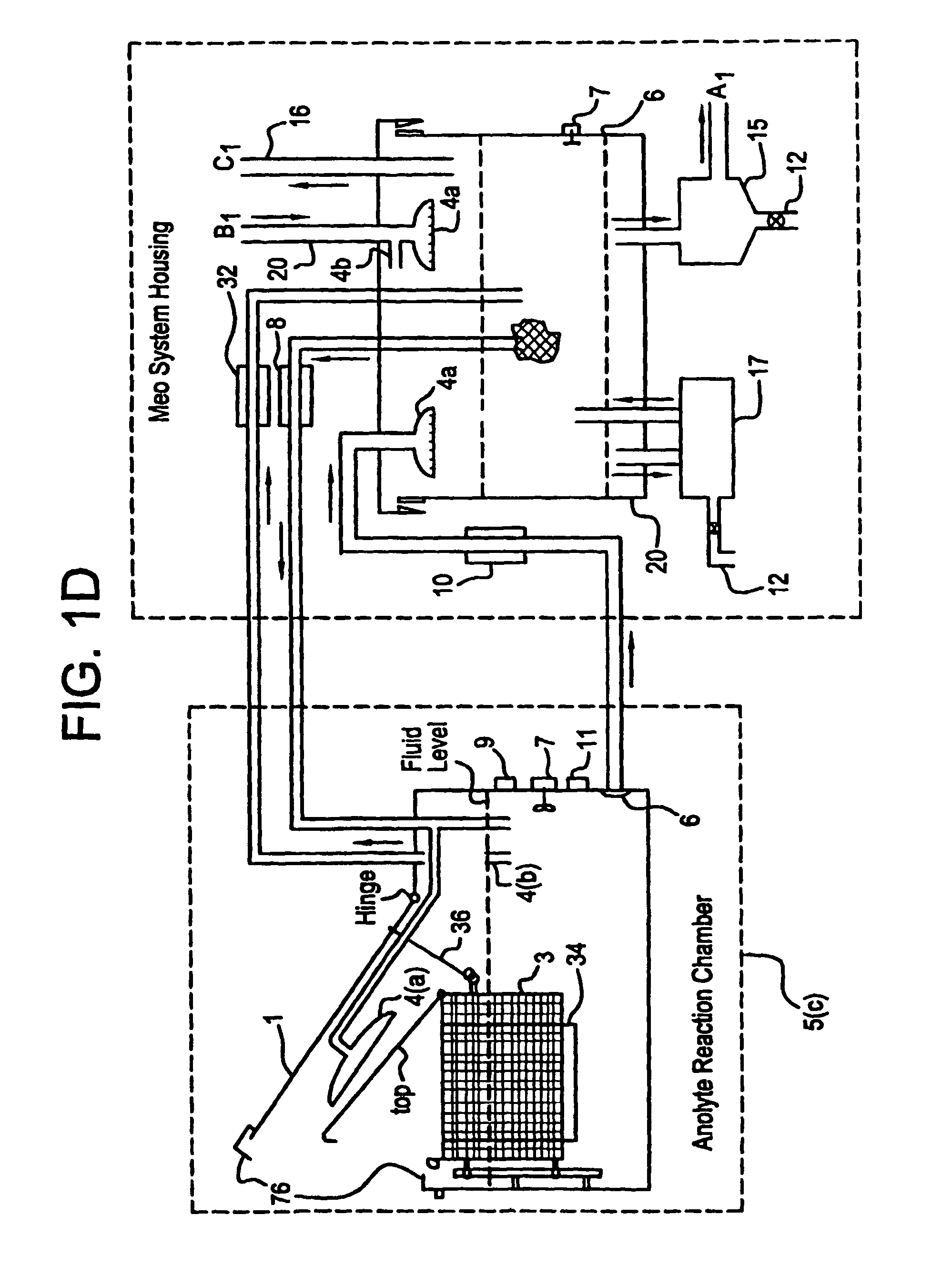Mediated electrochemical oxidation of inorganic materials
a technology of electrochemical oxidation and inorganic materials, which is applied in the direction of surface reaction electrolytic coating, crystal growth process, disinfection, etc., can solve the problems of increasing the burden on these companies as well as the whole country, increasing increasing the burden on mining companies. , to achieve the effect of enhancing the destruction rate of non-anolyte soluble inorganic waste, saving energy
- Summary
- Abstract
- Description
- Claims
- Application Information
AI Technical Summary
Benefits of technology
Problems solved by technology
Method used
Image
Examples
examples
[0174]The following examples illustrate the application of the process and the apparatus.
Example (1)
Oxidation of Inorganic Compounds
[0175]Numerous inorganic products have been oxidized in the MEO System Apparatus.
[0176]The MEO process was applied to both gold and platinum foils. The mediator redox couple used in the anolyte was the Fe+3 / FeO4−2 couple. A sulfuric based electrolyte was used in both the anolyte and catholyte. The mediator oxidized the gold and platinum and dissolved them into solution in the anolyte.
Example (2)
Efficient and Environmentally Safe Products
[0177]The MEO process produces ions in solution, and trace inorganic salts all of which are considered benign for introduction into the environment by regulatory agencies. The halogen ions produced by the dehalogenation of the halogenated inorganics are removed from the anolyte solution by a resin column. The cost of using the MEO process in this invention is competitive with both the incineration and landfill methodolog...
example
(8)
System By-Products are Safe
[0183]The system flexibility provides for the introduction of more then one mediator ion resulting in marked improvement in the efficiency of the electrolyte. Furthermore, the wide choice of mediators listed in Table I or available as POMs, and electrolytes in this patent, desensitizes the system to the formation of precipitates in solution (i.e. allows increased ease in preventing formation of unstable oxy compounds).
[0184]While the invention has been described with reference to specific embodiments, modifications and variations of the invention may be constructed without departing from the scope of the invention, which is defined in the following characteristics and features.
[0185]The invention provides the following new characteristics and features:
[0186]1. A process for treating and oxidizing inorganic waste materials comprising disposing an electrolyte in an electrochemical cell, separating the electrolyte into an anolyte portion and a catholyte po...
PUM
| Property | Measurement | Unit |
|---|---|---|
| temperature | aaaaa | aaaaa |
| pressure | aaaaa | aaaaa |
| boiling point | aaaaa | aaaaa |
Abstract
Description
Claims
Application Information
 Login to View More
Login to View More - R&D
- Intellectual Property
- Life Sciences
- Materials
- Tech Scout
- Unparalleled Data Quality
- Higher Quality Content
- 60% Fewer Hallucinations
Browse by: Latest US Patents, China's latest patents, Technical Efficacy Thesaurus, Application Domain, Technology Topic, Popular Technical Reports.
© 2025 PatSnap. All rights reserved.Legal|Privacy policy|Modern Slavery Act Transparency Statement|Sitemap|About US| Contact US: help@patsnap.com



